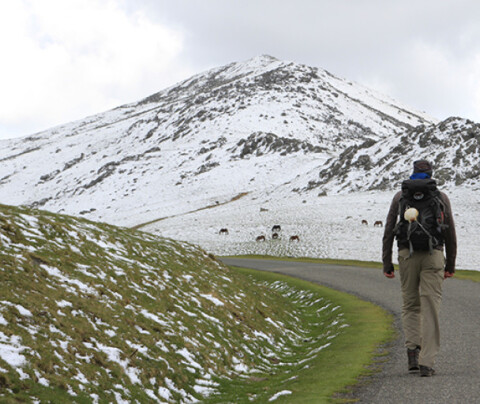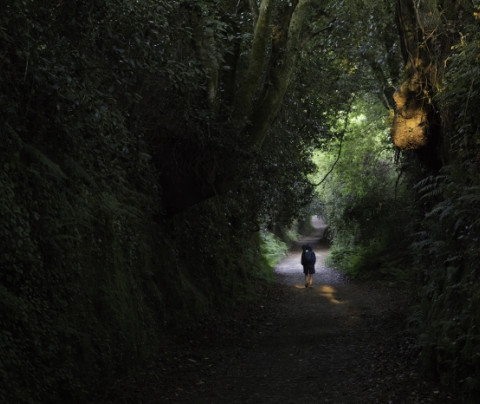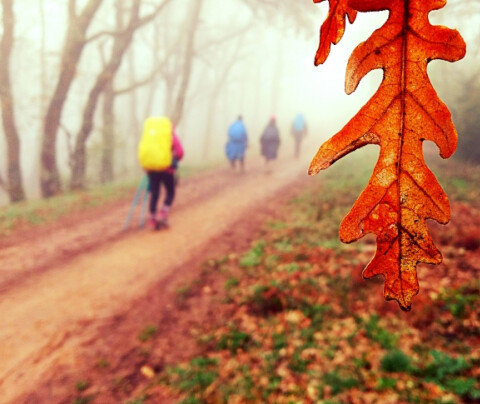Tips to do the Camino
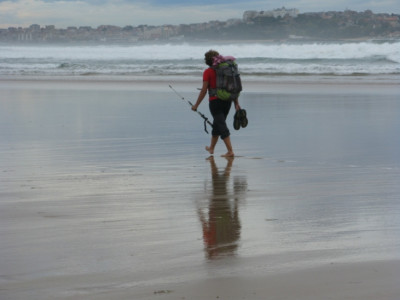
Unique landscapes, nature in its purest state and a rich cultural heritage make the Northern Camino one of the most attractive itineraries for pilgrims. As old as the French Way, this was the Way used by the European kings of the Middle Ages to reach the tomb of the Apostle.
Today we travel the Cantabrian coast from Irún to Santiago de Compostela accompanied by our postmen to advise you which places you cannot miss in order to enjoy the route to the fullest. We also remind you that if you want to live the adventure weight free, you can hire our baggage transport service Paq Mochila from Easter. This service takes your bags from stage to stage throughout the journey.
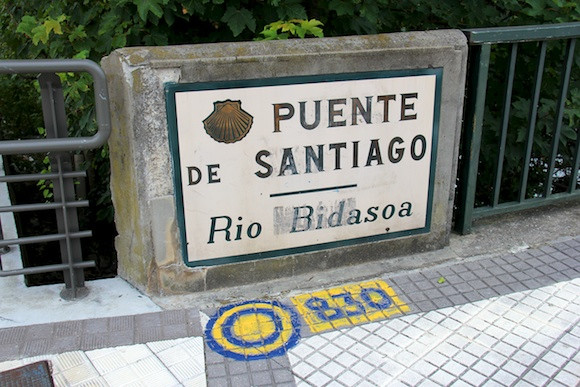
The Bridge of Santiago, which connects Hendaye and Irún, is the beginning of this adventure. There you will find the first yellow arrow of this itinerary formed by 35 stages to Santiago de Compostela. Photography is a must before diving into the beautiful landscapes that await us in the Basque Country, whose sea and mountains are the protagonists of this first part of the Cantabrian Route.
From pintxos in the Basque Country
San Sebastián, one of the most beautiful cities of this itinerary, is the destination of the first stage. Upon arrival, Jesús Antonio Velasco, Donostia postman, recommends us to extend the day and visit "the old", the historic center of the city and, of course, taste the delicious pintxos offered by the bars of the many establishments in the area. Before arriving in Bilbao, our postmen recommend us three essential stops.
Txema Fernández invites us to take a break in Zarautz and Getaria to try his famous txakolí. Already in Bizkaia, our companion Lourdes Juaristi highlights the church of Miguel de Arretxinaga in Markina, a curious hexagonal temple that has three large rocks that form a unique chapel. And finally, Irune Zulueta invites us in Gernika to visit the House of Meetings and the tree of Gernika, a symbolic oak for the Basques.
Our steps take us to Bilbao, one of the most important cities in the Basque Country. Despite having revolutionized the city and giving it a second life, the Guggenheim is not the only must visit. Our colleague Mari Jose Otxoa invites us to walk along the Nervión estuary until we enter the Casco Viejo of the city, where we can practice one of the favorite sports of the Basques: the poteo. And before leaving for Cantabria, the pilgrim must pass through Portugalete where, as Maria Isabel Cosgaya reminds us, we have to climb the footbridge of its famous Suspension Bridge and enjoy the extraordinary views of the Nervión estuary.
From prehistory to modernism
Cantabria opens before our eyes, with spectacular cliffs and beautiful villages. In Santander, Manuel Francisco Poo recommends touring the Jardines de Pereda, the Paseo de Castelar and the Magdalena, as well as enjoying its splendid bay.
A real leap in time we will experience when entering Santillana del Mar where Eusebio Abascal invites us to visit the Collegiate Church of Santa Juliana and its Romanesque cloister. And, if you have time, do not forget to visit the Caves of Altamira, where you can see the most famous prehistoric paintings in the world. The beauty is increasing in this tour of the North when arriving at Comillas, last stage finish in Cantabria. Purificación Gómez reminds us that Comillas has modernist palaces like El Capricho de Gaudí and advises us to buy some of the famous Cobreces cheeses.
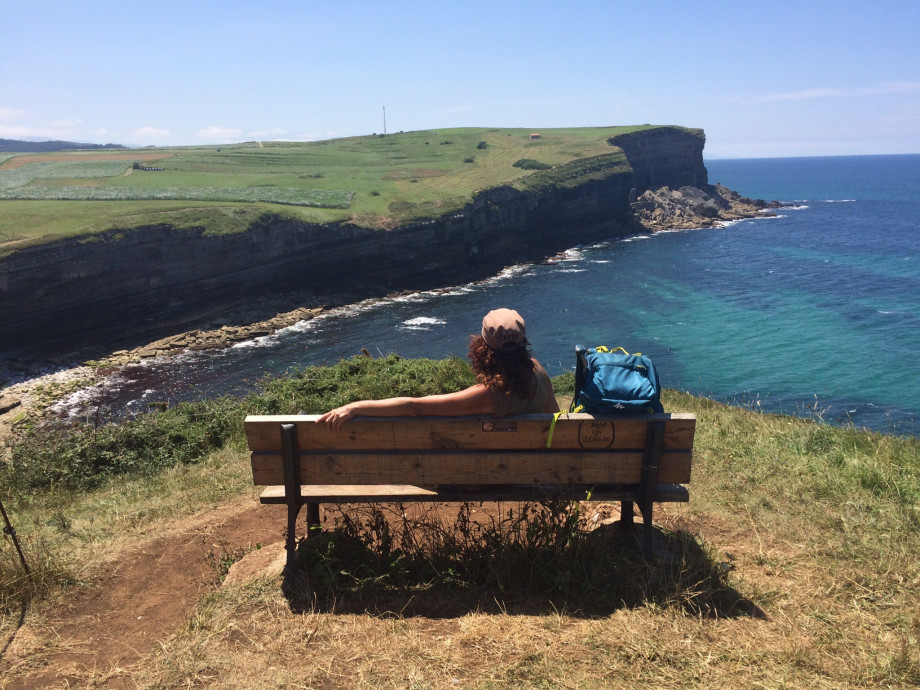
Walking on cliffs
Asturias is the third autonomous community of our route along the Camino del Norte. Just enter, in Llanes, follow the advice of Miguel Díaz and let yourself be taken by the Paseo de San Pedro, through which you can see the entire village, the coast with its cliffs and its port. Walking to Ribadesella, do not forget to make a stop on the road as recommended by Miguel Díaz and visit the beach of Cuevas del Mar, one of the most photographed; and the Gulpiyuri Beach, one of the most visited inland beaches of the Principality of Asturias.
In Avilés, you can not miss the old part of the town, one of the best preserved in Spain and declared a Historic Artistic Site and, as José Luis Pérez tells us, you can visit the Oscar Niemeyer Cultural Center, unique in all of Europe.
If we are not very tired, Isabel María Suárez recommends taking a small detour in Soto del Barco to San Esteban for a swim in the seawater pools. And at 3 km from Soto de Luiña you can find Cabo Vidio from where you can see the Estaca de Bares, the northernmost point of the peninsula.
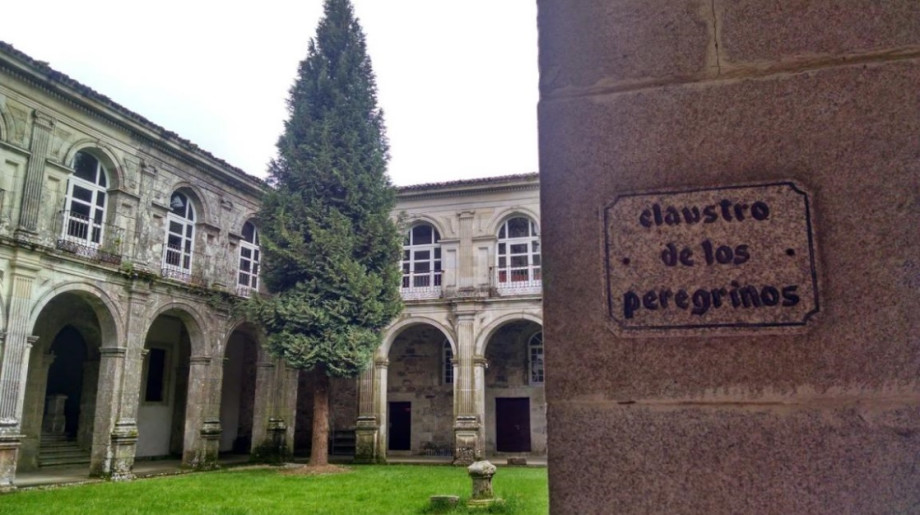
Knowing the Rei Cintolo and Sobrado dos Monxes
The Camino del Norte leaves the coast when you reach the Galician village of Ribadeo, where you can not go without visiting the old town and go down to the pier taking a walk to admire the views of the Ria del Eo, as recommended by Elisa Iglesias .
It is also advisable to make a stop in Mondoñedo and visit the Rei Cintolo cave, whose 7.5 km length makes it the largest cave in Galicia, as José Claro tells us. The last recommendation before arriving in Santiago is going to be done in Sobrado dos Monxes, another of the essential stops on the Camino de Santiago. Mary Carmen Varela recommends us to visit the monastery and, if we have the strength, make the circular route that borders it, known as Ruta de Carballeira.
And if all this has known little, remember that this website has a section dedicated to The Tips of the Postman, in which I can clarify your doubts or solve your questions. And that in all the stages of the different roads you will have some recommendation from the postmen of the area. And remember that on the Camino de Santiago you are never alone, since Correos has more than 150 offices along the different Ways of Santiago where you can solve the different needs that arise. Good way!
Your email address will not be published.
Mandatory fields are marked with *




